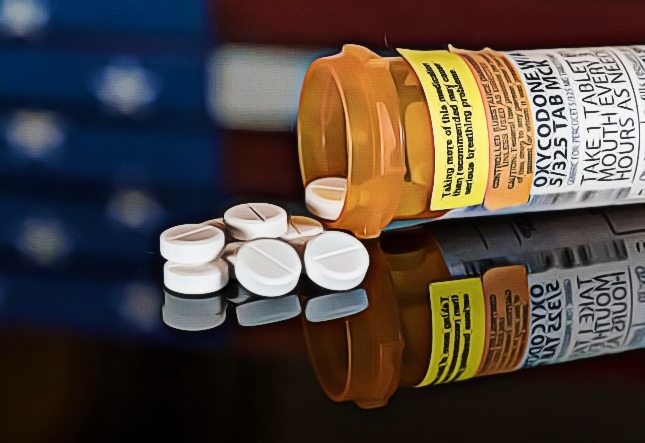Opiates are among the most common drugs in America because of their incredibly addictive effects. They come in prescription and illegal street drug forms, which many users easily abuse. Drug addiction continues to be a problem in the United States, and over a hundred opiate abusers die every day due to overdosing or other complications.
While common forms of opiates include heroin and other harder drugs, they are all derived from the poppy seed plant to treat pain or act as sedatives. The issue with opiates is that there are pharmaceutical forms that can be acquired legally, then distributed illegally. One of these prescribed opiates is called oxycodone, a Schedule II controlled drug meant to assist patients post-surgery or after an injury.
Oxycodone Half-Life
A drug’s half-life is the amount of time it takes for the substance’s effects to be reduced by half. Since most controlled substances and illicit drugs have psychoactive properties or produce a high, the half-life is used to measure how long it takes for each to leave the body fully. Painkillers and opiates have different effects on a person’s body with their respective half-lives.
Oxycodone comes in two variants that provide different releases. The immediate-release formula has a half-life of 3.2 hours until the dose starts to tail off. Controlled and extended-release variants have their half-lives of up to 5.6 hours for the average user. Depending on the nature of the pains, injuries, or illnesses, different variants of oxycodone will be prescribed. Four combinations are usually used, with two variants mixed with acetaminophen, one with aspirin, and the other with ibuprofen.
However, it is crucial to consider the various factors that can affect how people experience the pain-blocking properties of oxycodone. One thing that might affect how the dosage is felt is the size and weight of the person taking it. Smaller and lighter individuals benefit from a lower dosage and still have the same intended half-life.

Other factors that affect how people experience oxycodone are age, gender, liver and kidney functions, usage dynamics, and other substances’ consumption. Older people have a slower metabolism, which means that substances like opiates will take longer to clear their bodies than younger and more fit individuals. Females will have a higher half-life with oxycodone of up to 25 percent compared to males, and the reason this occurs continues to baffle researchers.
The organs like the liver and kidney can affect the half-life of opiates like oxycodone. Those with a weaker liver had a half-life increased by up to over two hours, and those with kidney issues had an increase of up to an hour. Additionally, regularly taking oxycodone can increase the accumulation of the substance in the body’s fats, where drug addiction often begins as the effects become more potent and longer-lasting. Furthermore, taking oxycodone with substances like alcohol and other medications can cause fatalities and health complications. The risk of death is why it is recommended to disclose the patient’s medical history before starting oxycodone or opiate treatment.
How Long Does Oxycodone Stay In Your System?
Oxycodone’s lasting effect on a person’s system depends on what test is being conducted. If you were prescribed this opiate by a doctor and have a drug test coming up, always disclose that you are taking it and have your prescription ready if the testers ask for it. There are four usual testing methods used to see if drugs are present in a person’s system. The most common is the urine test, followed by the other three blood, saliva, and hair testing methods to discover if a person uses substances.
Rehabs and addiction treatment centers will usually run drug tests to see what kind of drugs a patient is taking, while offices and other employers might run random tests on their employees. Oxycodone can be visible in urine and saliva tests for a period of up to four days since its last consumption. Blood tests can detect this opiate for only up to 24 hours, while hair is the longest at up to 90 days since the previous use.
As mentioned above, different factors play a role in how opiates and drugs are metabolized. Some people might have longer half-lives than others, and abusing oxycodone can make the presence of it in the body survive much longer than what is listed. While the effects of taking the substance aren’t going to last that long, these will still be detected in a drug test. This instance is why it’s always recommended to mention if you are taking any opiates.
Oxycodone Side Effects
Oxycodone has various side effects on people, so it is recommended to communicate anything out of the ordinary with doctors and medical professionals. Sometimes, administering oxycodone to children can have even worse effects, especially if the dosage is off or for an adult. Here are the common side effects felt by adults when taking oxycodone or other opiates for the first time:
- Nausea and vomiting
- Constipation or irregular bowel movements
- Headache
- Dizziness
- Lightheadedness
- Drowsiness
- Weakness or lack of energy
- Severe itching
- Dry mouth
- Sweating
- Trouble falling or staying asleep
- Itching of the skin
Some of these are typical sensations felt during the adjustment period of new medications, so monitoring the feelings for a few weeks can help doctors adjust dosages.
Oxycodone Withdrawal
Withdrawals happen when taking oxycodone if there is a dependence on the substance. Since opiates are highly addictive drugs, they can easily be abused, primarily if they are legally obtained and prescribed by a doctor. There are many symptoms that people can feel when they go through withdrawals, and those who develop a drug addiction will be able to tell if they have a problem because of these.
Some of the most common symptoms are similar to the side effects, except people might experience paranoia, mood swings, physical pains, elevated heart rates, and anxieties accompanied by shaking. The sensations vary in intensity depending on how addicted the person is to using oxycodone, as responsible users will feel side effect-like feelings instead of the full range.
Oxycodone Addiction
The blocking of pain receptors typically comes from the rush of dopamine to the brain triggered by the opiates in oxycodone. Its high is euphoric, making people want to feel its effects even way past its pain management effects. Some people will eventually lie to their doctors to obtain more prescriptions after their treatment has finished because of the addiction to this controlled substance. Oxycodone is classified as a Schedule II drug because of its high potential for misuse, so it pays to be careful with abusing opiates to stay healthy and safe.

Some signs indicate that someone is addicted to oxycodone, which are universal signs of drug addiction. The most common is using this drug in doses higher than prescribed while not coping without it. Some people will move heaven and earth to get a source or prescription of it, whether illegally or legally. An interference of life at home, in school, or at work can indicate an addiction.
Solving these problems requires drug rehab for addiction treatment, as this is a disease that can lead to harsh consequences in the end. Some people lose all their belongings and successes to their addictions, while others end up having health complications or even losing their lives to the substances. Seeking treatment is the best way to deal with oxycodone addiction.
Conclusion
Oxycodone is a difficult opiate to deal with, as this is legally prescribed to help people get better from injuries or surgeries. Dealing with opiate addiction can be challenging to solve, as the chemicals in these are damaging in high amounts. Consult drug rehabs to get assistance with addiction treatment for an improved life free from drugs.




